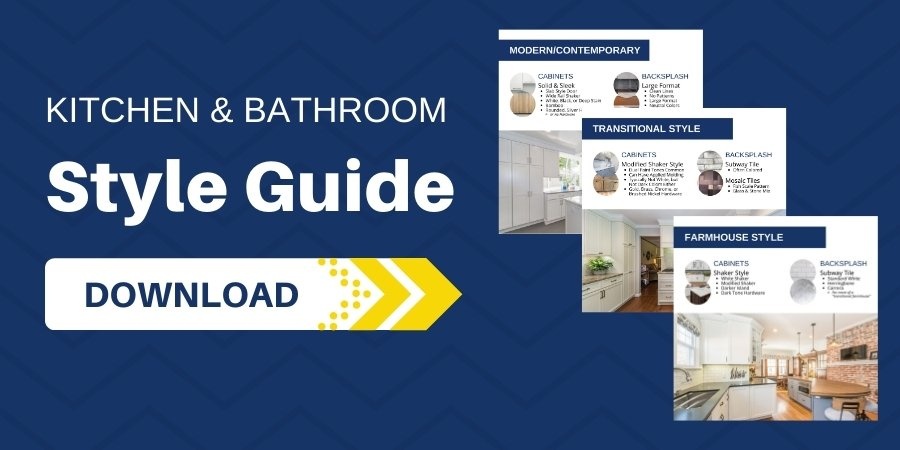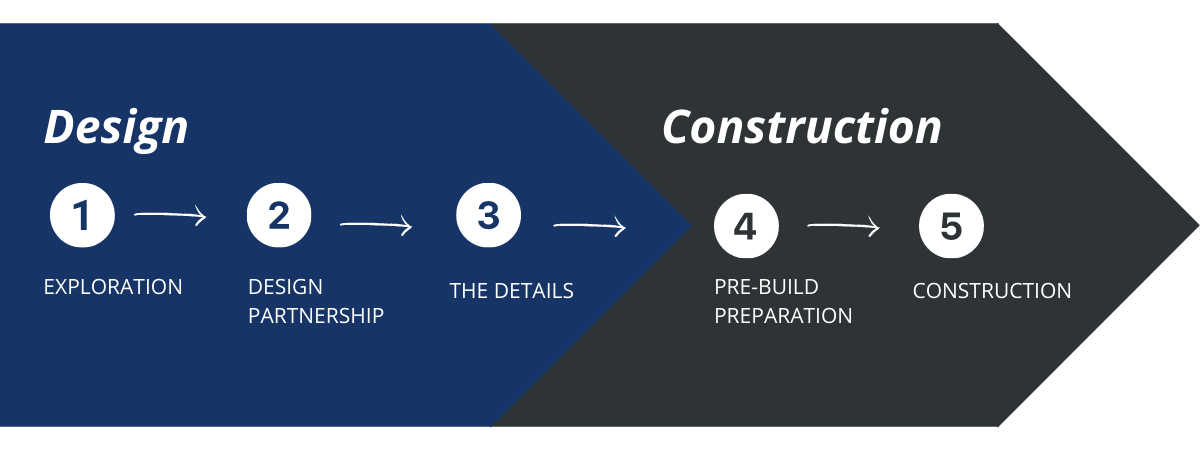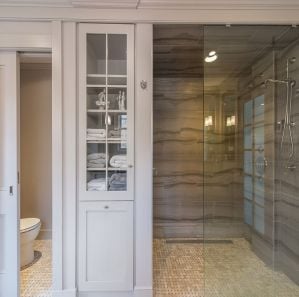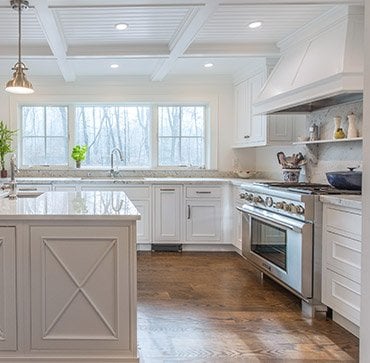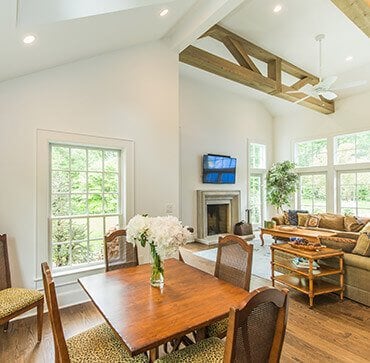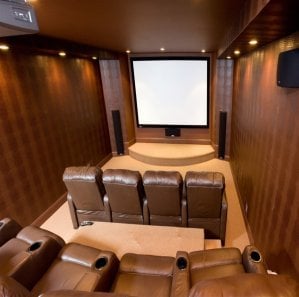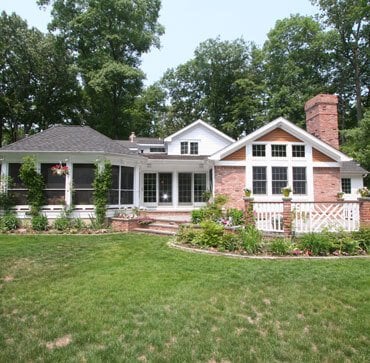-1.jpg?width=900&name=JMC%20Blog%20%26%20NL%20images%20(1)-1.jpg)
If you love your home and your neighborhood, one factor to consider when making home improvements or building a custom home is designing for aging in place. This type of design will help you stay comfortable in your home for the long term, eliminating the need to move simply because of changes in your mobility as you get older. What does it mean to design for aging in place? It means incorporating elements into your interior design that make senior living safer and more comfortable. These tips will help you get started.
1. Focus on Low Maintenance
Some elements of your home design can be made low maintenance, particularly on the home’s exterior. Vinyl siding and metal roofing, for instance, do not need to be painted or replaced as often as other materials. This means you can focus on enjoying your retirement, rather than exterior home maintenance, when you get older.
The same idea applies to your home’s landscaping. If you plant native plants, rather than decorative items that require a lot of watering, you’ll have better results with less work.
2. Think About Accessibility
You do not know what the future holds, but many seniors need to navigate their homes with assistance. Canes, walkers, and wheelchairs need a little bit of extra space. As you design your home, consider accessibility with wider hallways and doorways. Walk-in tubs in New Jersey can also be part of this accessibility, making it easier for you to shower independently when you are older. By incorporating these items into your design at the beginning, you can make them a natural part of the home, rather than something that looks like you added it as an after-thought.
The nice thing about walk-in tubs and showers is that they don’t have to look like they are designed for someone with a handicap when you incorporate them into the overall design. Accessibility is particularly important in the bathroom. For instance, rather than a tub with a swinging door, you could opt for a zero-clearance shower that has no threshold but looks modern and elegant. You can upgrade your toilet with a comfort-height model, without changing the overall look of the bathroom space. Modern aging-in-place house plans feature bathroom designs that incorporate this style seamlessly, making the space look attractive while also offering a safe design.
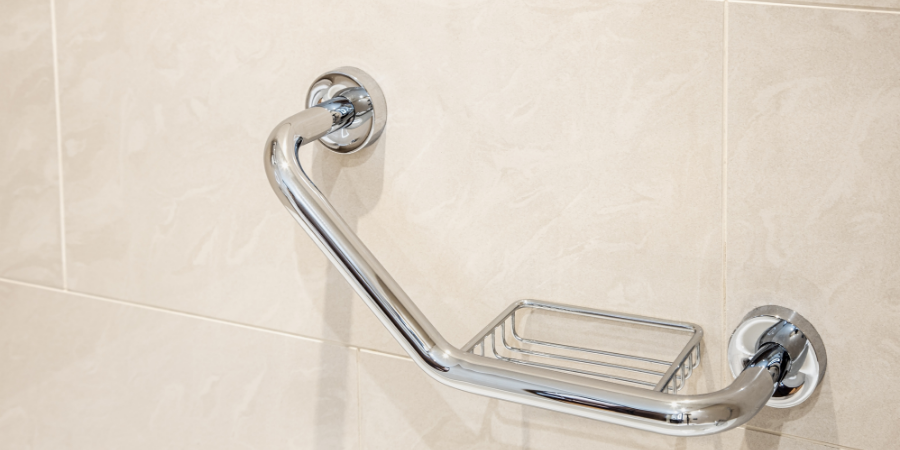 Having easy access is key for Aging In Place. With handles around the shower, this makes life much more simple and safe.
Having easy access is key for Aging In Place. With handles around the shower, this makes life much more simple and safe.
3. Make the Kitchen More Convenient
There are many small hacks in a kitchen that make it more comfortable for someone who is aging in place. Pull-out shelving, for example, eliminates the need to kneel down or bend over to access something deep in a cabinet. Lowering a dining counter so that you can use it with a regular chair, not a bar stool, is another good option to consider. Easy-open knobs and smooth-operating drawers are all helpful additions. Consider a hands-free sink, which turns on using motion detection instead of the knobs, for added convenience.
4. Contemplate the Stairs
Ideally, a home designed for aging in place will be a one-level home without the need for stairs, but this isn’t always possible. If you need to have stairs, or if the design you love includes them, then you will want to add some features to make them safer. For example, covering the stairs with slip-resistant material is helpful. You can also ensure that both walls have banisters that are sturdy enough for you to grab and steady yourself. Make the stairway wide enough that you could add a lift should the need arise later.
5. Increase the Lighting
As you look at aging-in-place house plans, you will notice quite a bit of built-in lighting. Lighting is an important part of interior design for senior living because many elderly adults suffer losses in vision. Lighting on stairs, under counters, and in hallways makes it safer to live in a home, and we can help you incorporate lighting directly into the home or remodel design, rather than adding it as an afterthought.
6. Decorate Smart
Once the design is done, consider the decorations. One of the biggest problems in homes, when you try to design safe, is not the design itself, but rather the elements horsewomen add to that design. Throw rugs, especially in bathrooms, create tripping hazards for people with mobility concerns. Opt for slip-resistant flooring that does not require a rug instead. Include decorative elements that are stable and sturdy that can double as a hand-hold as you navigate the home.
Schedule a Home Design Meeting to Discuss Aging in Place Home Design
planning for your future is helpful, giving you a home that can meet your needs now as well as when you are older. To get started, schedule a home design meeting with JMC Home Improvement Specialists. We will help you explore your options and show you design elements that can make aging in place both possible, and attractive.


